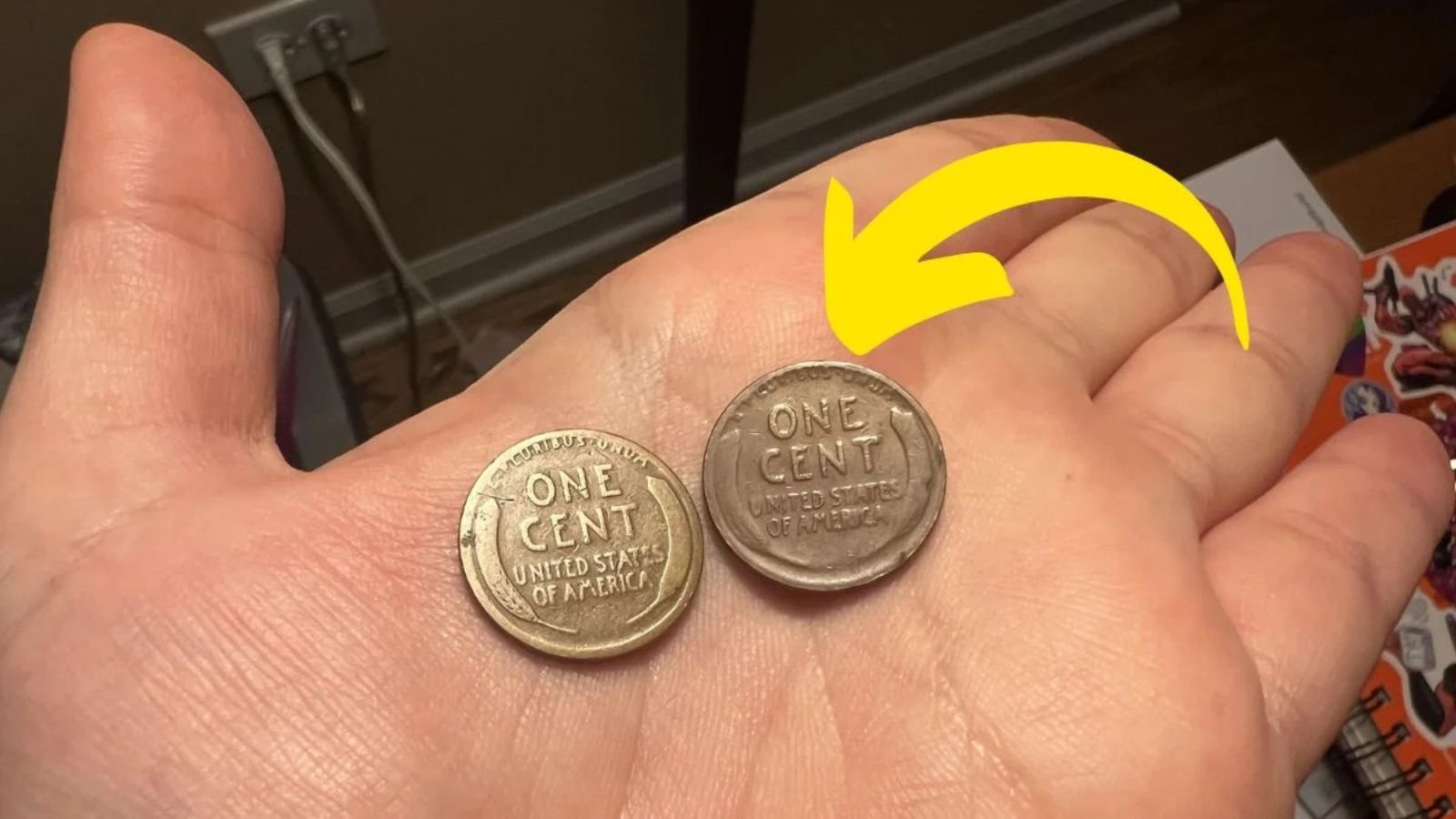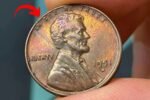Could a simple penny you carry in your change jar actually be worth millions? It might sound far-fetched, but for coin collectors and numismatic experts, the idea isn’t entirely out of the question. In fact, one Lincoln Wheat Penny—a humble one-cent piece from mid-20th-century America—has stunned the world with a jaw-dropping valuation of $8.2 million. And what’s even more intriguing? Some experts believe one or more of these valuable coins might still be out there in circulation.
The Lincoln Wheat Penny, minted from 1909 to 1958, is already beloved among collectors for its historical value and classic design. But one particular variation of this iconic penny—a rare 1943 bronze minting error—has become the holy grail of U.S. coin collecting. Let’s dive deep into what makes this coin so valuable, how to identify it, and why there’s still hope you could stumble across one.
The Lincoln Wheat Penny Valued at $80 Million, Still in Circulation
What Makes the Lincoln Wheat Penny So Valuable?
The Lincoln Wheat Penny in question is the 1943 Bronze Lincoln Wheat Penny, and its incredible value is due to a unique historical anomaly. During World War II, the United States faced a serious copper shortage, as copper was being diverted for wartime manufacturing—mainly for ammunition and electrical wiring.
To conserve resources, the U.S. Mint made a significant change to the penny’s composition in 1943. That year, instead of the traditional copper-based alloy, pennies were struck using zinc-coated steel planchets. These silver-colored steel cents are now known to nearly every coin collector as a one-year wartime issue. However, due to a rare mistake at the Mint, a small number of leftover bronze planchets from 1942 were accidentally used in the 1943 penny production process.
Only a handful of these 1943 bronze Lincoln Wheat Pennies are known to exist today. These were unintentionally created when the bronze coin blanks weren’t completely cleared from the minting machines during the material transition. The mistake resulted in a few 1943 pennies being struck in bronze instead of steel. This minting error, combined with the coin’s rarity and historical backstory, has turned the 1943 Bronze Lincoln Wheat Penny into one of the most coveted pieces in American numismatics.
Why the $8.2 Million Valuation?
You might be wondering: why would anyone pay $8.2 million for a penny?
It all comes down to a perfect storm of rarity, condition, historical importance, and demand. Coins are like any collectible—condition matters a lot. The $8.2 million price tag is based on a pristine, uncirculated example of the 1943 Bronze Lincoln Wheat Penny. These uncirculated examples have retained their sharp details and rich color, and they’re often graded very highly by professional numismatic services.
Only a very limited number of these bronze 1943 Lincoln Wheat Pennies have surfaced over the decades—fewer than two dozen are confirmed to exist. With such low supply and extremely high demand among elite collectors and investors, it’s no surprise the price has skyrocketed into the millions.
Another factor is provenance—some of these coins have remarkable ownership histories and have changed hands through prestigious auction houses. In rare cases, competition between wealthy collectors drives the price even higher, especially when an iconic piece like the bronze 1943 Lincoln Wheat Penny becomes available.
Could One Still Be in Circulation?
It may sound like a pipe dream, but it’s technically possible that an undiscovered 1943 Bronze Lincoln Wheat Penny could still be floating around. Over the years, there have been stories—some verified, many more urban legend—about valuable coins turning up in the most unexpected places: a coin jar, a drawer in grandma’s house, or even as change from a gas station.
While the likelihood is extremely small, it isn’t zero. Most of these valuable Lincoln Wheat Pennies have already been discovered and authenticated, but it’s entirely plausible that a stray bronze 1943 penny slipped through the cracks and ended up in circulation. The idea that you might be holding a coin worth millions in your pocket change is one of the most exciting possibilities for coin collectors and treasure hunters alike.
That’s part of the thrill of the Lincoln Wheat Penny. It’s such a widely circulated and collected coin that even beginners have a shot—however slim—of making a life-changing discovery.
How to Spot a 1943 Bronze Lincoln Wheat Penny
So, how do you know if your penny is the real deal? Here’s a checklist for identifying a 1943 Bronze Lincoln Wheat Penny:
1. Check the Date and Color
The first thing to look for is the 1943 date on a penny that appears copper or bronze-colored. The vast majority of 1943 pennies are silver-colored because they were made from zinc-coated steel. If your 1943 penny is brown or reddish—typical of copper—it could be something special.
2. Do the Magnet Test
Steel is magnetic, but bronze (copper alloy) is not. If your 1943 penny sticks to a magnet, it’s a standard steel cent and has little to no collectible value. If it doesn’t stick, you may have found something worth examining further.
3. Weigh the Coin
A 1943 bronze Lincoln Wheat Penny should weigh about 3.11 grams, while the steel version weighs closer to 2.7 grams. A precise digital scale can help you with this test. If your penny weighs in the bronze range, that’s another good sign.
4. Seek Professional Authentication
If you think your coin passes the initial tests, don’t jump to conclusions just yet. There are many counterfeits out there, including altered coins where someone changes the date on a 1948 or 1945 copper penny to make it appear as a 1943. These fakes are common and often fool amateurs.
Always consult a professional numismatist or send your coin to a trusted grading service such as PCGS (Professional Coin Grading Service) or NGC (Numismatic Guaranty Company). These experts can determine whether your coin is genuine and assess its condition—two factors that are absolutely essential when it comes to market value.
Beware of Counterfeits and Scams
Given the enormous value of a genuine 1943 Bronze Lincoln Wheat Penny, it’s no surprise that fakes and forgeries are rampant in the coin-collecting world. Some forgers go to great lengths to alter common pennies into deceptive fakes. The most frequently altered coins are 1948 Lincoln Wheat Pennies—where the “8” is reshaped to look like a “3.”
In other cases, scammers coat steel cents to resemble copper, hoping to fool inexperienced collectors. That’s why authentication is crucial. Do not rely solely on YouTube videos or DIY tests when it comes to a coin that could be worth millions. A reputable coin dealer or grading service is your best safeguard against being misled.
Why the Lincoln Wheat Penny Continues to Inspire
There’s something uniquely captivating about the Lincoln Wheat Penny—a coin that represents both American history and the enduring appeal of treasure hunting. Whether it’s because of its vintage design, the memory of seeing them in grandparents’ collections, or the tantalizing possibility of finding a million-dollar version, these pennies have carved out a special place in American culture.
Collectors love them for their historical value and mint variations, while casual enthusiasts are often drawn in by the thrill of the chase. With so many small details—mint marks, metal compositions, and date varieties—the Lincoln Wheat Penny offers an accessible entry point into the fascinating world of coin collecting.
Final Thoughts: Is the Dream Real?
While the odds of finding a multimillion-dollar Lincoln Wheat Penny in your pocket change are incredibly low, the possibility—however remote—isn’t zero. The story of the 1943 Bronze Lincoln Wheat Penny proves that sometimes, errors and accidents can lead to extraordinary value.
Whether you’re a seasoned collector or a complete beginner, there’s never a bad time to check your change jar. That old copper penny in your drawer might just be worth more than you think. And even if you never stumble across an $8.2 million prize, the hobby of collecting Lincoln Wheat Pennies offers its own rewards—history, nostalgia, and the joy of discovery.
Disclaimer:
This article is intended for informational purposes only. The values mentioned are based on rare, professionally graded examples and are not typical of everyday coins. Coin value can vary greatly based on condition, rarity, and collector demand. Always consult a qualified numismatist or grading service if you suspect you have a rare coin. While it’s exciting to dream, million-dollar Lincoln Wheat Pennies are exceptionally rare, and many fakes exist. This article does not constitute financial or investment advice.
Some Important Link
| Telegram Group | Click Here |
| WhatsApp Group | Click Here |
| Home Page | Click Here |














